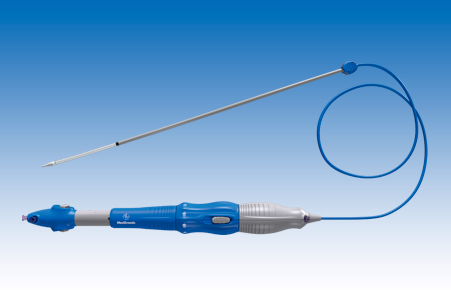The Evolut R, as well as its predecessor the CoreValve, is a self-expandable valve, supra-annular, made of porcine pericardium in a nitinol frame. Amongst its improvements, it has a better profile and the option to resheath. This makes it fully repositionable and even recapturable.
We only needed to confirm these technical advantages would translate into clinical advantages (which is what really matters) in a large population of patients in the real world.
The FORWARD study (CoreValve Evolut R FORWARD) is a prospective registry including 1038 patients from 53 centers across four continents.
Also Read: “REPRISE III: Lotus and CoreValve Measured in High Risk or Inoperable Patients”.
Patients were 81.8 ± 6.2 mean age and had 5.5 ± 4.5% STS, which puts them at intermediate risk, matching the current trend in clinical practice.
The repositioning feature was applied in 25.8% of patients, which allowed for a single valve to be successfully implanted in the proper anatomic location in 98.9% of patients.
At 30 days, mortality was 1.9% and disabling stroke was 1.8%.
Also read: “Evolut R: Clinical Outcomes Better than 1st Gen CoreValve”.
Only 1.9% of patients presented moderate to severe aortic regurgitation; definite pacemaker rate was 17.5%. Both data are below the SURTAVI outcomes, which tested CoreValve in a similar population (3.4% and 25.9% respectively), and the improvement can be attributed to its repositionable capacity.
Conclusion
The new generation self-expandable valve is safe and effective in unselected patients with severe aortic stenosis in the real world.
Editorial Comment
The 1.9% all-cause mortality rate is clearly under the expected 5.5% (as per STS score) and matches the 1.1% described in the registry that tested the last SAPIEN 3 self-expandable valve in a similar population.
98% of patients were treated via femoral access, which is also the latest world trend, given that it significantly reduces device profile.
Fortunately, the vast majority of technical improvements incorporated to the new devices (both this one and the competition’s) has been successfully translated into clinical improvements for patients, reducing paravalvular regurgitation, pacemaker implantation rate and vascular complications.
Original title: Clinical Outcomes with a Repositionable Self-Expanding Transcatheter Aortic Valve Prosthesis. The International FORWARD Study.
Reference: Eberhard Grube et al. J Am Coll Cardiol 2017;70:845–53.
Get the latest scientific articles on interventional cardiologySubscribe to our weekly newsletter
We are interested in your opinion. Please, leave your comments, thoughts, questions, etc., below. They will be most welcome.






